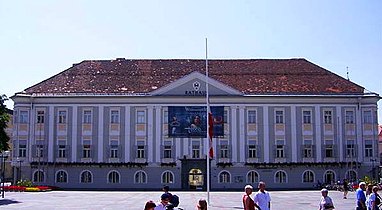| Orsini-Rosenberg | |
|---|---|
 | |
| Parent house | House of Graben von Stein |
| Country | Austria |
| Founded | first named in 1322 |
| Founder | Konrad ab dem Roesenperg |
| Titles | Reichsfürst und Reichsgraf von Orsini und Rosenberg Burggraf of Klagenfurt Freiherr auf Lerchenau und Grafenstein |
The House of Orsini-Rosenberg (also Ursin-Rosenberg) is the name of an old Austrian noble family. The family is mediatized and as such belongs to the high nobility. It originally sprang out from the Graben family (an apparent or illegitimate branch of the House of Meinhardin) [1] from Castle Alt-Grabenhofen near the city of Graz. [2]














